This article was medically reviewed by Lydia Shedlofsky, DO. Dr. Lydia Shedlofsky is a Resident Dermatologist who joined Affiliated Dermatology in July of 2019 after completing a traditional rotating internship at Larkin Community Hospital in Miami, Florida. She earned a Bachelor of Science in Biology at Guilford College in Greensboro, North Carolina. After graduation, she moved to Beira, Mozambique, and worked as a research assistant and intern at a free clinic. She completed a Post-Baccalaureate program and subsequently earned a Master's Degree in Medical Education and a Doctorate of Osteopathic Medicine (DO) from the Lake Erie College of Osteopathic Medicine.
There are 9 references cited in this article, which can be found at the bottom of the page.
wikiHow marks an article as reader-approved once it receives enough positive feedback. This article received 13 testimonials and 100% of readers who voted found it helpful, earning it our reader-approved status.
This article has been viewed 1,392,835 times.
Ringworm, or tinea corporis, is a fungal infection of the skin that is not caused by worms. Ringworm often starts as an itchy, reddish, ring-shaped rash that can be anywhere on your body.[1] You can easily treat a mild case of ringworm at home with antifungal lotions or creams. More severe cases may require a doctor’s visit and prescription medication. By recognizing the symptoms of ringworm early and treating the infection at home, you may be able to avoid more involved medical treatment.
Steps
Recognizing Ringworm Symptoms
-
1Be aware of your risk. Although anyone can get ringworm, certain people are more prone to developing the infection. You are more likely to develop ringworm if you:
- Are younger than 15 years of age
- Reside in a humid, damp, or crowded place
- Come into close contact with a person or animal infected with ringworm
- Share clothing, bedding, or towels with a person who has ringworm
- Take part in sports that include skin-to-skin contact such as wrestling
- Wear tight clothing
- Have a weakened immune system
-
2Watch for a scaly patches. In most cases, ringworm starts as a flat and scaly patch of skin. As the infection progresses, the scaly patch may grow in size.
- Be aware that ringworm of the scalp often starts as a small sore that looks like a pimple. Keep an eye on the spot to see how it develops.[2]
- Notice patches by running your fingers over the skin to see if it feels scaly. Your skin patch may also be slightly matte in color from the scales. Watch the patch to see if it develops further or gets itchy, which may indicate ringworm.
- Make sure to wash your hands thoroughly with soap and water after touching any skin you suspect may be infected with ringworm. This can keep it from spreading to other parts of your body.
Advertisement -
3Look at the patch border. Scaly skin may have a raised border that expands outward as the infection spreads on your skin. The patch will form a roughly circular ring, hence the name ringworm.
- Be aware that the basic contours of the scaly or infected patch will be circular, but may also appear to be wavy like the outline of a snake or worm. You may also have several rings that interconnect with one another.
- See if you have any patchy and itchy areas in your groin or on your feet that are not circular in shape. These areas may both be signs of a fungal infection more commonly known as jock itch and athlete’s foot.[3]
- Check the color of the border and see if it is a darker red than the inside of the patch. This is often a good indication of a ringworm infection.
-
4Examine the inside of the patch. The external and internal areas of most ringworm infections have different textures or appearances. Check the internal area of the patch for the following signs, which can indicate ringworm:
-
5Experience itching and discomfort. One of the most common symptoms of ringworm is severe itching and discomfort on your skin, especially near patches or sores.[6] If you have itching and/ or discomfort with any of the other symptoms, chances are you have ringworm and should get a diagnosis.
-
6
Administering Home Treatments
-
1Use a topical antifungal lotion or cream. Mild cases of ringworm often respond to the application of an antifungal lotion. These preparations can relieve symptoms such as itching and kill the infection.
- Get a topical antifungal treatment such as clotrimazole or terbinafine at a local pharmacy or medical supply store. Follow the packaging instructions or any by your doctor to treat the infection.
- These treatments work by making the cell wall of the fungus unstable and causes membrane leakage. This essentially "kills" the infection.
-
2Kill ringworm with honey. Rubbing honey on to ringworm may get rid of ringworm or prevent it from recurring on your skin. It also can help relieve any inflammation associated with ringworm. Apply some warmed honey directly to your ringworm or spread a layer on a bandage and put it over the infection.[9]
- Change the bandage or reapply honey twice a day until the infection goes away.
-
3Bandage ringworm with garlic. Place a few slices of garlic directly on your ringworm and then cover the area with a bandage. Garlic has antifungal properties that may kill the infection.
- Peel garlic and slice the clove into thin sections. Put the slices directly on the infection and then cover it with a bandage.[10] Wear the garlic overnight and repeat application every night until the infection disappears.
-
4Apply apple cider vinegar. Like garlic, apple cider vinegar has medicinal properties. Applying apple cider vinegar directly on ringworm for a few days can kill the infection.[11]
- Wet a cotton pad with apple cider vinegar and rub it onto the ringworm.[12] Repeat this treatment three to five times per day for one to three days.
-
5Dry out the infection with a paste. A salt and vinegar paste may kill ringworm.[13] Apply the mixture for a week and see if it eases your infection.
- Mix salt and vinegar into a paste and put it directly on the infection. Leave the mixture on your skin for five minutes and then rinse it off with warm water. It may take up to a week for salt and vinegar to kill ringworm.
-
6Try essential oils. Tea tree and lavender essential oils have strong antifungal properties. Use either oil to halt the development of ringworm and kill it.[14]
- Mix a solution of tea tree oil and water, using equal parts water and oil. Use this mixture for up to a week on the infection.
- Put a dab of lavender oil on the infection every day. Lavender oil treatments can take a bit longer — up to a month — to kill ringworm.
Seeking Medical Treatment
-
1Schedule a doctor’s appointment. If home treatments do not help or heal your ringworm, or if it gets worse, make an appointment with your doctor. This is the only way to get a definitive diagnosis and your doctor can develop a sensible treatment plan to combat and prevent your ringworm.
- Undergo a physical exam in which your doctor will look for symptoms of ringworm. They may ask for your health history and factors such as exposure to ringworm.
- Ask your doctor any questions you have about ringworm or how you may have contracted it.
- Remember skin-to-skin contact, contact with bed linens, or an infected animal or person can spread this infection. Ensure that if anyone else in your home has the infection that they are treated as well to avoid getting reinfected after it clears.
-
2Receive a diagnosis. In most cases, your doctor can diagnose ringworm by examining it; however, you may need some testing to confirm a diagnosis. This can also help your doctor develop the best treatment plan for you.[15]
- Your doctor may scrape off some skin flakes to examine under a microscope. Your doctor will want to identify the fungus and diagnose your ringworm, especially if it is resistant to infection.
- If standard treatments do not work, your doctor will run more tests for immune deficiency issues.
-
3Get prescription antifungal lotions or creams. Your doctor might prescribe an antifungal cream or lotion if your ringworm is severe. Prescription antifungals are more powerful than over-the-counter options and may be more effective at treating your ringworm.[16]
- Follow dosing instructions if your doctor gives you a prescription antifungal medicine.
-
4Take oral antifungals. Your doctor may also prescribe an oral treatment for ringworm. These pills are often used for more severe cases of ringworm and may be used in conjunction with creams or lotions.[17]
- Take oral antifungals for eight to 10 weeks and follow the dosing instructions. The most common medications are terbinafine, itraconazole, griseofulvin, and fluconazole.
- Be aware that oral antifungals may have the following side effects: diarrhea, indigestion, nausea, and headache.
-
5Shampoo with an antifungal product. For scalp ringworm, you may take an oral antifungal and shampoo with an antifungal product. This may be easier and more effective at curing scalp ringworm than home treatments.[18]
- Consider using a shampoo with tea tree oil if you can’t find an antifungal shampoo, as tea tree oil has antifungal properties and may help eradicate the infection.
- Consider using Selsun Blue shampoo for your skin. This can help prevent and treat fungal infections. Use it three times a week, using your regular soap the rest of the time. Once the infection clears up, us it twice a week for a while.
- Be careful not to get the shampoo in your eyes and avoid using it on your face.
Preventing Ringworm
-
1Maintain good hygiene. Proper hygiene is an important part of preventing and treating ringworm. Simple measures — such as washing your hands to using only your own personal items — can keep ringworm from spreading to others and may prevent recurrences.
-
2Clean your skin. Ringworm is a result of parasites that feed on skin cells. Washing your hands frequently and showering daily may help prevent ringworm or its recurrence.
- Use a soap and water to wash skin after using the restroom or touching common surfaces.
- Wear flip flops or shower shoes if you shower in a gym or locker room.
-
3Dry skin completely. Damp environments can promote the growth of ringworm. Be sure to completely dry your skin with a towel or by air after swimming or a shower. This can eliminate a damp environment that promotes fungus growth
- Dust talc or cornstarch rice powder to keep your skin dry of water or sweat.
- Use a deodorant and antiperspirant under your arms to keep them dry, which may help prevent ringworm.
-
4Avoid contact. Because ringworm is highly contagious, avoid sharing personal items. This can prevent ringworm or recurrence of the infection.
- Keep the towels, bedding, and clothing of an infected person separate from your items. Hairbrushes and combs can also spread ringworm.
-
5Dress in loose, cool clothing. Wear clothing appropriate to the weather and choose to layer items in the event of changing temperatures. This can prevent the sweating that promotes the conditions favorable to ringworm.
- Wear soft and lightweight clothing in the summer. Choose fabrics like cotton that allow your skin to breathe.
- Wear layers in winter or at transitional times. Layering allows you to easily remove clothes so you don’t get hot. In turn, it prevents sweating that can promote an environment conducive to ringworm. Consider fabrics such as merino wool to keep you warm and dry.
Expert Q&A
Did you know you can get expert answers for this article?
Unlock expert answers by supporting wikiHow
-
QuestionHow is ringworm spread?
 Lydia Shedlofsky, DODr. Lydia Shedlofsky is a Resident Dermatologist who joined Affiliated Dermatology in July of 2019 after completing a traditional rotating internship at Larkin Community Hospital in Miami, Florida. She earned a Bachelor of Science in Biology at Guilford College in Greensboro, North Carolina. After graduation, she moved to Beira, Mozambique, and worked as a research assistant and intern at a free clinic. She completed a Post-Baccalaureate program and subsequently earned a Master's Degree in Medical Education and a Doctorate of Osteopathic Medicine (DO) from the Lake Erie College of Osteopathic Medicine.
Lydia Shedlofsky, DODr. Lydia Shedlofsky is a Resident Dermatologist who joined Affiliated Dermatology in July of 2019 after completing a traditional rotating internship at Larkin Community Hospital in Miami, Florida. She earned a Bachelor of Science in Biology at Guilford College in Greensboro, North Carolina. After graduation, she moved to Beira, Mozambique, and worked as a research assistant and intern at a free clinic. She completed a Post-Baccalaureate program and subsequently earned a Master's Degree in Medical Education and a Doctorate of Osteopathic Medicine (DO) from the Lake Erie College of Osteopathic Medicine.
Dermatologist
-
QuestionWhat if I have a rash doesn't itch and it looks like ring worm, but it's just there?
 Shari Forschen, NP, MAShari Forschen is a Registered Nurse at Sanford Health in North Dakota. Shari has worked in healthcare since 1996 and her expertise lies in acute care bedside nursing on a medical oncology floor. She received her degree from Medcenter one College of Nursing in 2003 and her Family Nurse Practitioner Masters from the University of North Dakota in 2014. Shari is a member of the American Nurses Association.
Shari Forschen, NP, MAShari Forschen is a Registered Nurse at Sanford Health in North Dakota. Shari has worked in healthcare since 1996 and her expertise lies in acute care bedside nursing on a medical oncology floor. She received her degree from Medcenter one College of Nursing in 2003 and her Family Nurse Practitioner Masters from the University of North Dakota in 2014. Shari is a member of the American Nurses Association.
Master's Degree, Nursing, University of North Dakota
-
QuestionShould I put the anti-fungal cream, then put a bandaid on, or just let it air out?
 Shari Forschen, NP, MAShari Forschen is a Registered Nurse at Sanford Health in North Dakota. Shari has worked in healthcare since 1996 and her expertise lies in acute care bedside nursing on a medical oncology floor. She received her degree from Medcenter one College of Nursing in 2003 and her Family Nurse Practitioner Masters from the University of North Dakota in 2014. Shari is a member of the American Nurses Association.
Shari Forschen, NP, MAShari Forschen is a Registered Nurse at Sanford Health in North Dakota. Shari has worked in healthcare since 1996 and her expertise lies in acute care bedside nursing on a medical oncology floor. She received her degree from Medcenter one College of Nursing in 2003 and her Family Nurse Practitioner Masters from the University of North Dakota in 2014. Shari is a member of the American Nurses Association.
Master's Degree, Nursing, University of North Dakota
References
- ↑ http://www.healthline.com/health/ringworm#Overview1
- ↑ http://kidshealth.org/en/teens/ringworm.html
- ↑ http://kidshealth.org/en/teens/ringworm.html
- ↑ http://www.healthline.com/health/ringworm#Symptoms4
- ↑ http://kidshealth.org/en/teens/ringworm.html
- ↑ http://kidshealth.org/en/teens/ringworm.html
- ↑ http://www.healthline.com/health/ringworm#Symptoms4
- ↑ http://kidshealth.org/en/teens/ringworm.html#
- ↑ http://www.ncbi.nlm.nih.gov/pmc/articles/PMC3758027/
- ↑ http://www.naturalalternativeremedy.com/the-11-best-at-home-remedies-for-ringworm/
- ↑ http://www.naturalalternativeremedy.com/the-11-best-at-home-remedies-for-ringworm/
- ↑ http://www.naturalalternativeremedy.com/the-11-best-at-home-remedies-for-ringworm/
- ↑ http://www.naturalalternativeremedy.com/the-11-best-at-home-remedies-for-ringworm/
- ↑ http://www.naturalalternativeremedy.com/the-11-best-at-home-remedies-for-ringworm/
- ↑ http://www.mayoclinic.org/diseases-conditions/ringworm/basics/tests-diagnosis/con-20021104
- ↑ http://www.nhs.uk/Conditions/Ringworm/Pages/Treatment.aspx
- ↑ http://www.nhs.uk/Conditions/Ringworm/Pages/Treatment.aspx
- ↑ http://www.nhs.uk/Conditions/Ringworm/Pages/Treatment.aspx
About This Article
To identify ringworm, look for scaly, circular patches on your skin that may grow over time. Inside the rings, your skin may blister, ooze, or go clear. Your skin may also be itchy, especially around the sores. If you’re under 15, live in a humid or damp environment, or play close-contact sports like wrestling, you’re particularly prone to getting ringworm. To treat ringworm, try a topical antifungal lotion or cream from a drugstore. Alternatively, rub honey or apple cider vinegar onto your scaly patches a few times a day. If your infection hasn’t cleared up after 3 days, visit your doctor, who may prescribe stronger antifungal cream or pills. For more tips from our Medical co-author, including how to prevent ringworm in the future, read on!



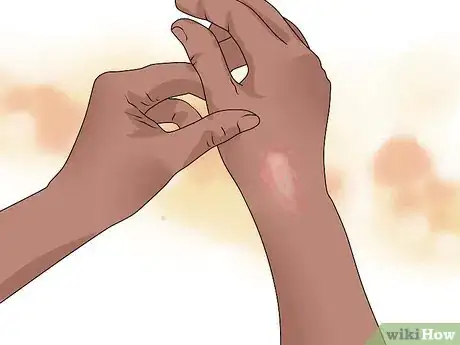

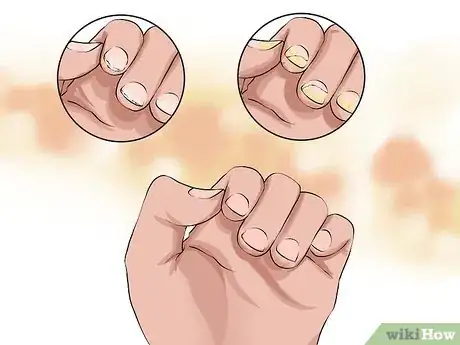

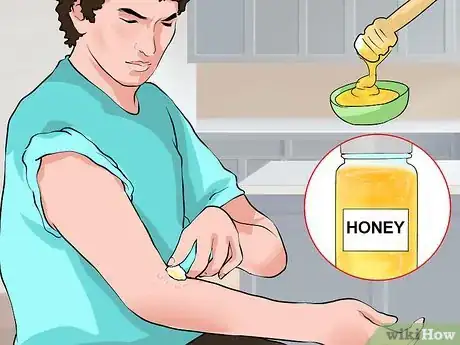


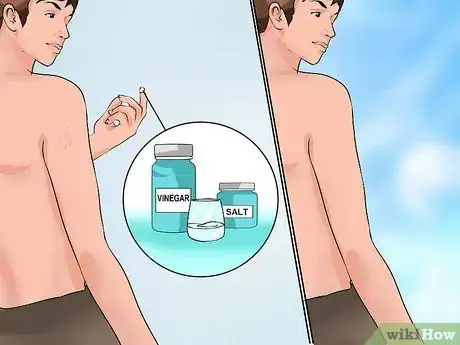
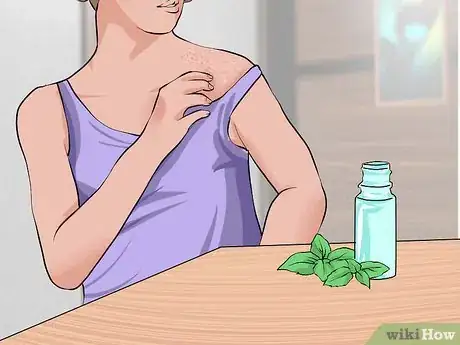







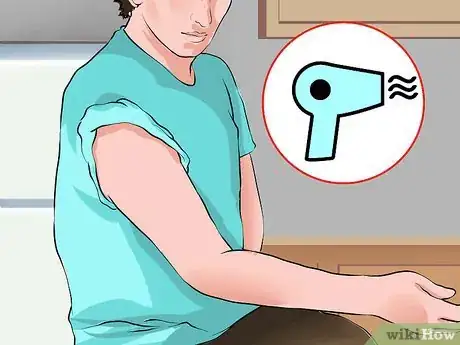
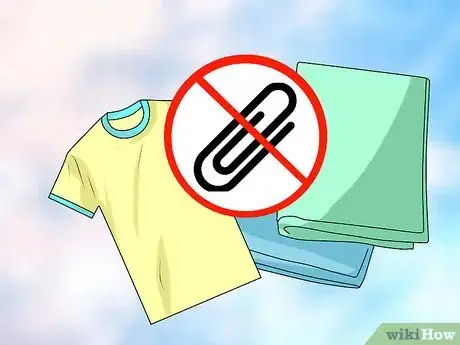

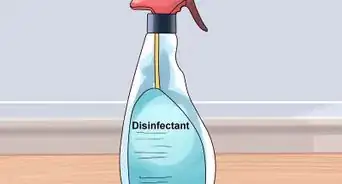

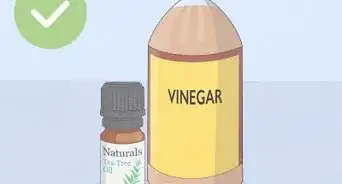
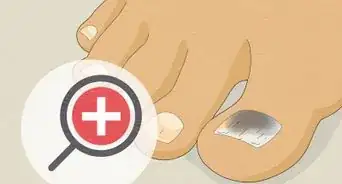







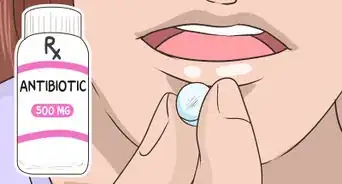
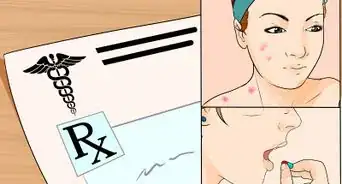











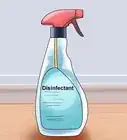


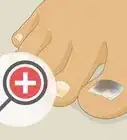




































Medical Disclaimer
The content of this article is not intended to be a substitute for professional medical advice, examination, diagnosis, or treatment. You should always contact your doctor or other qualified healthcare professional before starting, changing, or stopping any kind of health treatment.
Read More...